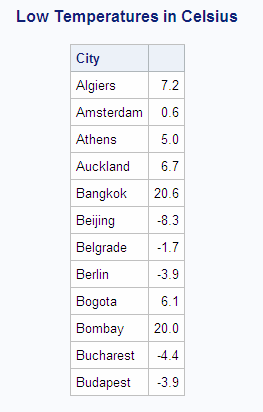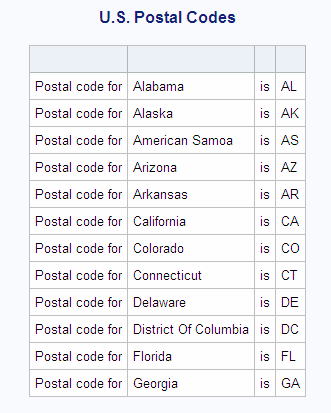To create a SAS view instead use the VIEW option in the DATA statement. To calculate the 2-lagged 3-lagged n-lagged etc.

Introduction To Sas Creating New Variables Module 03 Youtube
Since you didnt explain what value you want lets use a simple example of two times the original value.

. For example the MONTH function will take a date and return just the month. By default lag finds the previous value of some variable. If firstSN then _x 1.
Merging SAS Tables in a Data Step. Col_name_new cats substr col_name 1 find col_name _ _n_. To create a new variable you just need to assign it a value.
Creating a SAS Table from a CSV File. These columns can contain text or calculations. There are many functions to choose from in over 20 different.
Accessing Data in SAS Libraries. Specifying Column Attributes In addition to selecting columns that are stored in a table you can create new columns that exist for the duration of the query. For example the SET MERGE MODIFY and UPDATE statements can also create variables.
Using an Assignment Statement In a DATA step you can create a new variable and assign it a value by using it for the first time on the left side of an assignment statement. The following examples show how to. Col_a col_b col_c However entering an IF-THEN condition or any other valid SAS statement generates an error because this feature is designed to allow only the right side of an expression.
The logic that I am trying to create is. Lag1_value lag value. Values of some variable.
If you have write access to a SAS data set then you can use the Data Grid in SAS Enterprise Guide to create a new column using an expression such as. Create a Macro Variable with all the Renames. Merging SAS Tables in a Data Step.
However you can use lag2 lag3 lagn etc. Column_proc1 2 column1. For every unique customer based on email or ID number in column A I would like to look at column B and if there is a mix of POS and Web then the third column MC if not then non MC.
SAS determines the length of a variable from its first occurrence in the DATA step. You can use the LAG function in SAS to retrieve lagged values of some variable. Assuming that your input table table1 is sorted by SN the following code should perform the required action.
PROC SQL writes the columns that you create as if they were columns from the table. Accessing Data in SAS Libraries. I have two columns and would like to create a third.
A function takes a value and turns it into another related value. Whenever you need to create output the output from a SAS view reflects the current input data values. Creating a SAS Table from a CSV File.
Else newvar 0. Adding Text to Output. First you write down the name of your new variable followed by an equal sign and the definition of the variable.
Hoping someone can provide me the stepshow to create new columns in SAS Proc SQL. If you want to perform the same calculations for multiple variables then you should look at the array statement. With a SAS view you can for example process monthly sales figures without having to edit your DATA step.
SAS Enterprise Guide has many built-in functions you can use to build expressions when creating new columns. In this article we discuss how to create three types of variables in SAS numeric character and date based on existing variables. If RT 1 and _x then do.
Create a mapping table with the new column names data workmapping_col_names. In SAS you create a new variable in the Data Step. This function uses the following basic syntax.
Column A represents a unique customer record. By default you create a SAS data file. The LOG function will return the natural log of a number.
An example would be using the existing data from table itemtrack - from this table want to create 3 new columns by month by using the dates that exist in column Date_Bought and insert the new columns with data from column Bought.

Sas Help Center Creating New Columns

0 Comments